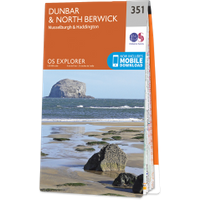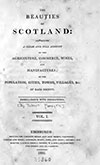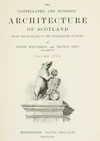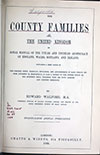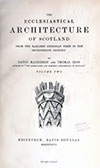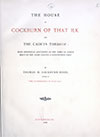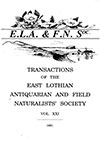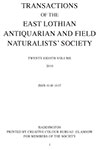

Haddington House is an L-plan house which was built in the 17th century on the site of a medieval house, however it isn’t clear if the house was fortified.
In 1477 James III gave land here, known as the Kingis Yaird, King’s Yaird or King’s Yard, to Sir Richard Cockburn, a bailie of Haddington and son of Sir Patrick Cockburn of Newbigging, who then gifted it to the friars of the Franciscan monastery which was situated around 200m to the north-east. A 1497 reference to croft land owned by the friars describes it as being known as “le Kingis palace” “in the vulgar tongue.” Following the Reformation the friars gave the land to the town in 1580 and it became known as the Friars’ Croft.
There are precious few clues regarding Haddington House on early maps since the earliest to show the area in any detail, an early 17th century map by Hendrik Hondius based on Timothy Pont’s late 16th century work, depicts various unnamed towers or buildings representing Hadtyntoun.
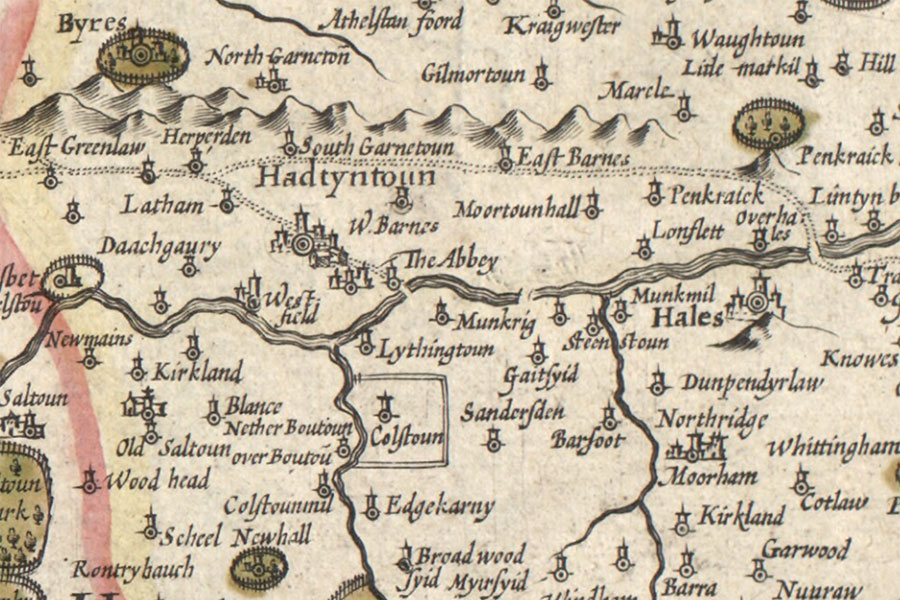
Hendrik Hondius, Amsterdam, 1630map image courtesy of NLS
The building, which is sometimes described as the oldest dwelling in Haddington, is thought to date to the early 17th century however it is conceivable that it was first built at the end of the 16th century when the land was transferred by the friars.
It consists of three storeys plus a basement, and within the basement level are a beehive oven and a large stone sink which certainly suggests the incorporation of parts of an older building. The main block runs approximately east to west with a wing projecting south from its west end. In the re-entrant angle is an octagonal stair turret with the original entrance in its south face at ground floor level.
Three rooms on the north side all feature pilastered fireplaces dating to the late 17th century, the first floor example having an early 17th century tempera-painted panel incorporated into the overmantel.
The house was owned in the 17th century by Alexander Maitland, said to be a brother of Robert Maitland of the Bass, who was factor and chamberlain to John Maitland, 1st Duke of Lauderdale and 2nd Earl of Lauderdale, and later Principal Keeper of the Money Stamp of Scotland. In 1657 Alexander married Katherine Cunninghame and they went on to have sixteen children.
In 1675 Alexander received a disposition of a doocot from his neighbour, William McCall, who lived in a mansion immediately to the north of Haddington House. Renovation work in 2014 revealed a low blocked doorway on the doocot’s west side with roughly-dressed stone jambs and lintel which have been interpreted as late 16th century in date. It’s possible that the original doocot was contemporary with the earlier building incorporated into Haddington House and once stood within the house’s original plot, subdivided some time before the mid-17th century.
Within the north-east corner of the ground floor of the two storey doocot is a hearth which may indicate that the building was originally a summerhouse, perhaps similar to that found at Edzell Caste in Angus which dates to the late 16th or early 17th centuries.
In 1680 the house was remodelled and a new entrance was created on the west façade at first floor level with a balustraded stone staircase leading up to it from Sidegate. Above the doorway are carved the initials AM and KC, for Alexander Maitland and his wife Katherine Cunninghame, and the date 1680.
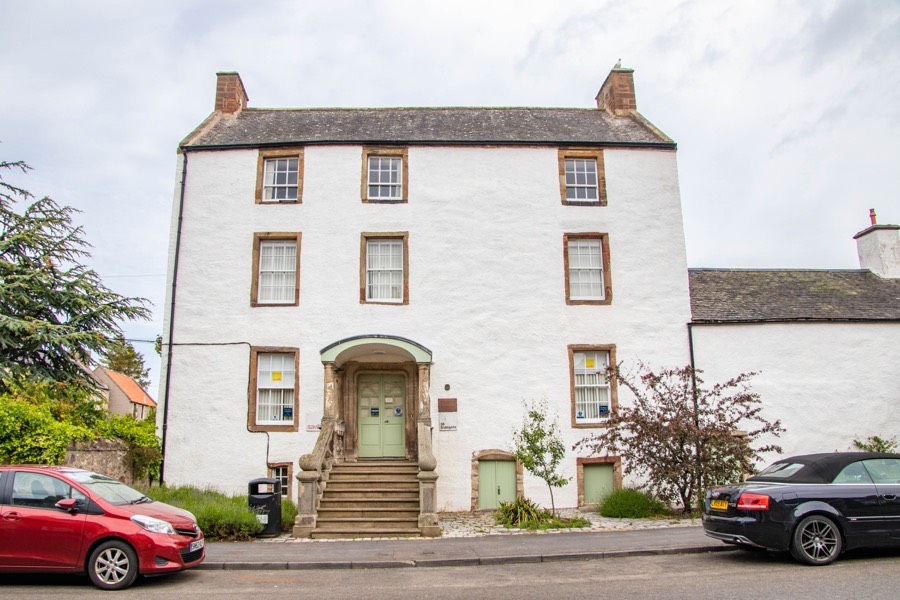
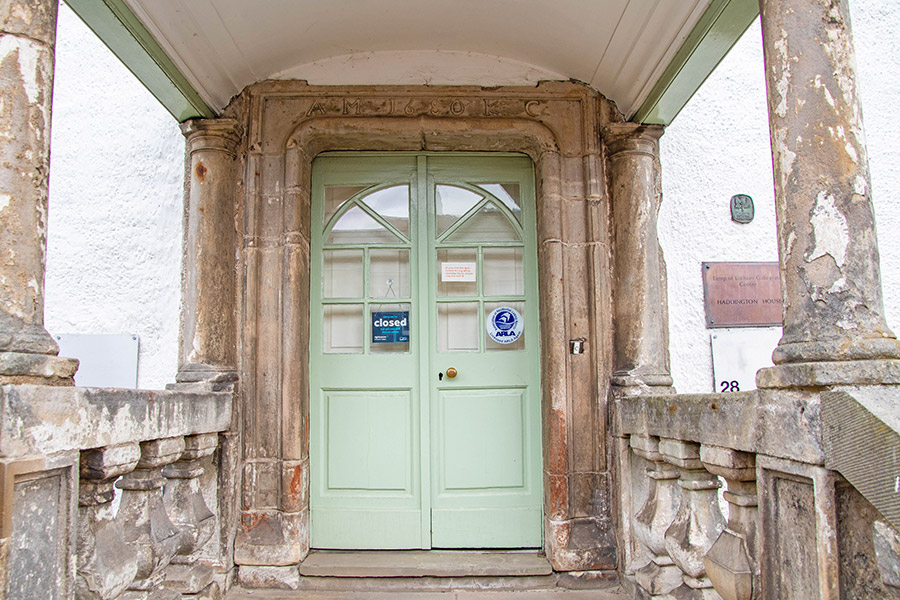
A sundial once stood in the garden of the house and was also engraved with the initials AM and KC but with the date 1688. Alexander Maitland died in 1708 and was succeeded by his eldest surviving son, Charles.
Around 1800 a two storey bowed fillet was added to the east of the stair tower and a single storey wing added to the south of the original wing. The owner at this time was James Wilkie of Rathobyres and Gilchriston, known as “Old Justice Wilkie”, who died in 1825. The house passed to his son, William, and then after his death to William’s unmarried daughters who lived there until at least 1851.
The next owner, a Mr Runciman, let the house and garden in 1862 to James R Cossar, a gardener, before they were sold in 1886 to Andrew Beatson, Dean of Guilds, for £650. In 1889 and 1892 the house was occupied by Daniel Wilkie but in 1894 Mark Ormiston, owner of the neighbouring property of Friar’s Croft and later Provost of Haddington, bought the house for £760. Daniel Wilkie is listed as resident again in 1908 and 1909. The house was let from 1920 to another gardener, Harry Faunt, who lived there until his death in 1966.
By the mid-20th century the house had become dilapidated. From 1942 the East Lothian Antiquarian and Field Naturalists’ Society explored possibilities to rescue the house, driven in part by Lady Edith Broun Lindsay of Colstoun, and in 1948 the then owner, Mr Purves, offered them the option to purchase the house for £1500. This was more than the Society could afford however one of their members, David Charteris, 12th Earl of Wemyss and 8th Earl of March, offered to put up the money on behalf of the Wemyss and March Estates and buy the house while the Society raised the required funds.
In 1966 an agreement was made between the Society and the Duke and Duchess of Hamilton to sell the house, doocot and around a quarter of the garden to the Hamilton and Kinneil Estates to become part of The Lamp of Lothian Project with the sale going through in 1967. The Lamp of Lothian Collegiate Trust was founded by Elizabeth Hamilton, Duchess of Hamilton, in 1967 with the aim of restoring buildings on the south side of Haddington and making them available for community use. One of its first projects, between 1969 and 1970, was to restore Haddington House with the work overseen by the architect Schomberg Scott. Hamilton and Kinneil Estates gifted the house to the Trust in 1970 and it became their headquarters.
In 1972 Douglas Hamilton, 14th Duke of Hamilton, bought the remaining three quarters of the garden, around 1.59 acres, and founded the Haddington Garden Trust to whom he gifted the land. The Lamp of Lothian Collegiate Trust gifted the doocot and quarter of the garden to the Haddington Garden Trust in 1973 and the gardens were restored in the style of a 17th century garden by Schomberg Scott and the doocot renovated.
Since 1995 the house has been let out to provide the Trust with an income stream. The gardens are known as Lady Kitty’s Garden and are open to the public.



